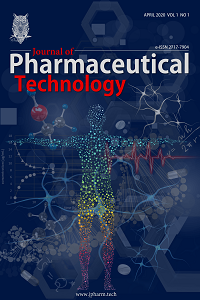
Journal of Pharmaceutical Technology
Yazarlar: ["Fargana MUSAYEVA", "Saniye ÖZCAN", "Mustafa Sinan KAYNAK"]
Konular:-
DOI:10.37662/jpt.2022.1012432
Anahtar Kelimeler:Analytical method,Collagen supplement,Collagen types,Drinkable collagen,Physicochemical properties
Özet: One of the most abundant proteins formed in the human body is collagen. It is responsible for the strength of body tissues in all cellular systems by establishing support networks. Collagen fibers are generally opaque and white, due to this reason they are easily recognized in the tissues. Collagen fibers, which are viscoelastic, have low extensibility and high tensile strength. The isoelectric point is around pH 5.8. Collagen is widely used as it helps blood coagulate, remodeling tissue. Although there are no known side effects, there is some concern about its role in inflammation, group-to-group variability, and possible disease transfection, given that animal-derived (natural) collagen is used in many clinical applications. Not every protein is of equal value, so not every collagen is of equal value. Thanks to its low molecular weight, hydrolyzed collagen is quickly digested by our body and enters our blood circulation. According to study, the most suitable type of collagen is the one in powder or liquid form for collagen peptides that can be easily absorbed and used by our body. Not every protein is of equal value, so not every collagen is of equal value. Thanks to its low molecular weight, hydrolyzed collagen is quickly digested by our body and enters our blood circulation. According to study, the most suitable type of collagen is the one in powder or liquid form for collagen peptides that can be easily absorbed and used by our body. It is necessary to rely on the most appropriate analysis technique to evaluate the quality feature. Techniques such as SEC, MS, HPLC and NMR are used to characterize complex peptide mixtures. Classical fibril-forming collagen includes collagen types I, II, III, V, and XI. These collagenes are characterized by their ability to aggregate into highly oriented supramolecular aggregates, forming fibrillar arrays with diameters between 25 and 400 nm. Being a natural protein and its technical characteristics, it is expected that development and consumption of collagen hydrolyzate will increase in the coming years. In this review, physical and chemical properties of collagen, types, pharmacology properties, quantity determination methods are briefly described.